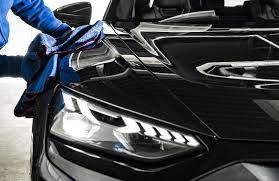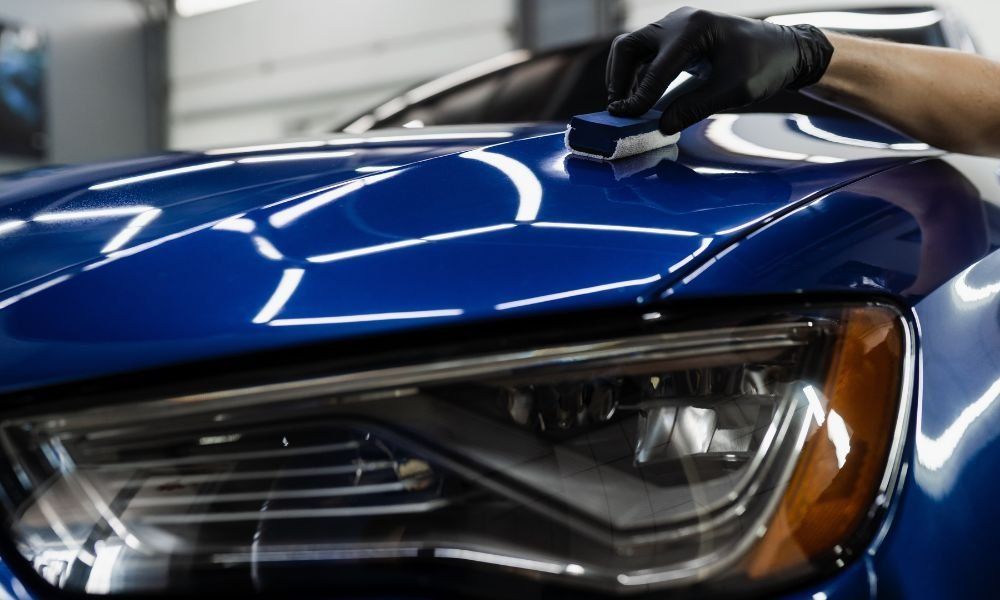By Derek Woodard
•
July 21, 2025
Protect Your Ride: How Ceramic Coating Offers Durable Paint Protection in Raleigh Owning a car in Raleigh means dealing with everything from pollen storms to unpredictable weather, which can take a toll on your vehicle's paint. That's where ceramic coating comes into play, offering a reliable shield against these elements while keeping your car looking its best. This advanced treatment not only enhances the shine of your vehicle but also makes cleaning a breeze by repelling dirt and grime. With mobile detailing services in Raleigh , you can even enjoy the convenience of professional care right at your doorstep. Curious about how ceramic coating can benefit your ride? Let's explore the advantages that come with this cutting-edge car care solution. Benefits of Ceramic Coating Ceramic coating offers several advantages for vehicle owners in Raleigh. Let's explore the key benefits that make this treatment a popular choice for car enthusiasts and everyday drivers alike. Long-Lasting Protection Ceramic coating provides a durable shield for your vehicle's paint, lasting far longer than traditional wax or sealants. This advanced protection helps your car withstand various environmental challenges. The coating forms a strong bond with your car's paint, creating a hard, transparent layer that resists UV rays, oxidation, and chemical contaminants. This means your vehicle's color stays vibrant for years, even under Raleigh's sometimes harsh sun. With proper care, a ceramic coating can last up to five years or more. This longevity makes it a smart investment for those who want to maintain their vehicle's appearance without frequent reapplications. Ceramic coating Raleigh services offer professional-grade products that maximize these protective qualities, ensuring your car stays shielded against the elements for as long as possible. Enhanced Visual Appeal Ceramic coating doesn't just protect your car; it also enhances its appearance, giving it a showroom-quality shine that turns heads on Raleigh roads. The coating's smooth surface creates a deep, glossy finish that makes your car's color pop. This effect is particularly noticeable on darker-colored vehicles, where the depth and richness of the paint become more pronounced. Beyond the initial wow factor, ceramic coating helps maintain your car's appearance over time. Its hydrophobic properties cause water to bead and roll off easily, taking dirt and grime with it. This self-cleaning effect keeps your car looking cleaner between washes. Cost-Effective Maintenance While the initial investment in ceramic coating might seem high, it often proves cost-effective in the long run. This treatment can save you money on car care over time. With ceramic coating, you'll need to wash your car less frequently. When you do wash it, the process is quicker and easier because dirt and grime don't stick as readily to the coated surface. This means less time and money spent on car washes and detailing services. The coating's protective properties also help prevent minor scratches and swirl marks, reducing the need for paint correction services. This preservation of your car's finish can contribute to a higher resale value when it's time to sell or trade in your vehicle. Lastly, by protecting against environmental damage, ceramic coating can help you avoid costly paint repairs or resprays down the line, making it a smart financial decision for Raleigh car owners. Understanding Ceramic Coating To fully appreciate the benefits of ceramic coating, it's important to understand what it is and how it works. Let's delve into the science behind this innovative car care solution. How It Works Ceramic coating is a liquid polymer that chemically bonds with your vehicle's factory paint, creating a protective layer that enhances its durability and appearance. The coating contains tiny particles that fill in the microscopic pores in your car's paint. When cured, these particles create a smooth, hydrophobic surface that repels water, dirt, and other contaminants. This makes it harder for these elements to stick to your car's surface. The curing process is crucial for the coating's effectiveness. After application, the coating needs time to bond with the paint and harden. This process can take anywhere from a few hours to a few days, depending on the specific product used. Once fully cured, the ceramic coating creates a semi-permanent bond with your car's paint. This bond is much stronger than traditional wax or sealants, which is why ceramic coating offers longer-lasting protection. Why It's Popular in Raleigh Ceramic coating has gained popularity in Raleigh due to its ability to protect vehicles from the city's unique environmental challenges. Raleigh's climate, with its hot summers and occasional pollen storms, can be tough on car paint. Ceramic coating helps protect against UV damage and makes it easier to remove pollen and other seasonal debris from your vehicle's surface. The city's growing car enthusiast community has also contributed to the popularity of ceramic coating. Many car shows and meetups in the area showcase vehicles with this high-end finish, inspiring others to invest in the treatment. Raleigh's busy professionals appreciate the low-maintenance aspect of ceramic coating. With less frequent washing required, it's a time-saving solution for those with hectic schedules. Vehicle protection Raleigh services have seen increased demand for ceramic coating as more car owners recognize its long-term benefits in preserving their vehicles' appearance and value. Choosing Professional Services When it comes to ceramic coating, professional application is key to achieving the best results. Let's explore how to find and choose the right service provider in Raleigh. Mobile Detailing Services Raleigh Mobile detailing services offer a convenient option for Raleigh residents looking to get their cars ceramic coated without the hassle of visiting a shop. These services bring professional-grade equipment and products directly to your location, whether it's your home or office. This saves you time and ensures your car receives expert treatment in a controlled environment. Mobile detailers in Raleigh often offer flexible scheduling, making it easier to fit a ceramic coating appointment into your busy life. Many also provide comprehensive services, from paint correction to interior detailing, alongside ceramic coating. When choosing a mobile detailing service, look for providers who use high-quality ceramic coating products and have experience working with various vehicle types. A reputable service should be able to explain their process and provide examples of their work. Finding Trusted Experts Selecting the right professional for ceramic coating is crucial to ensure you get the best results and value for your investment. Start by researching local auto detailing businesses that specialize in ceramic coating. Look for companies with positive reviews and a strong reputation in the Raleigh area. Don't hesitate to ask for before-and-after photos of their previous work. When contacting potential service providers, ask about their certification and training. Reputable ceramic coating experts should be certified by product manufacturers and have extensive experience in paint correction and protection. Inquire about the specific products they use and the warranties they offer. A trustworthy service should be transparent about their materials and stand behind their work with a solid guarantee. Lastly, don't base your decision solely on price. While cost is a factor, the quality of the service and products used should be your primary consideration when choosing a ceramic coating expert in Raleigh.




